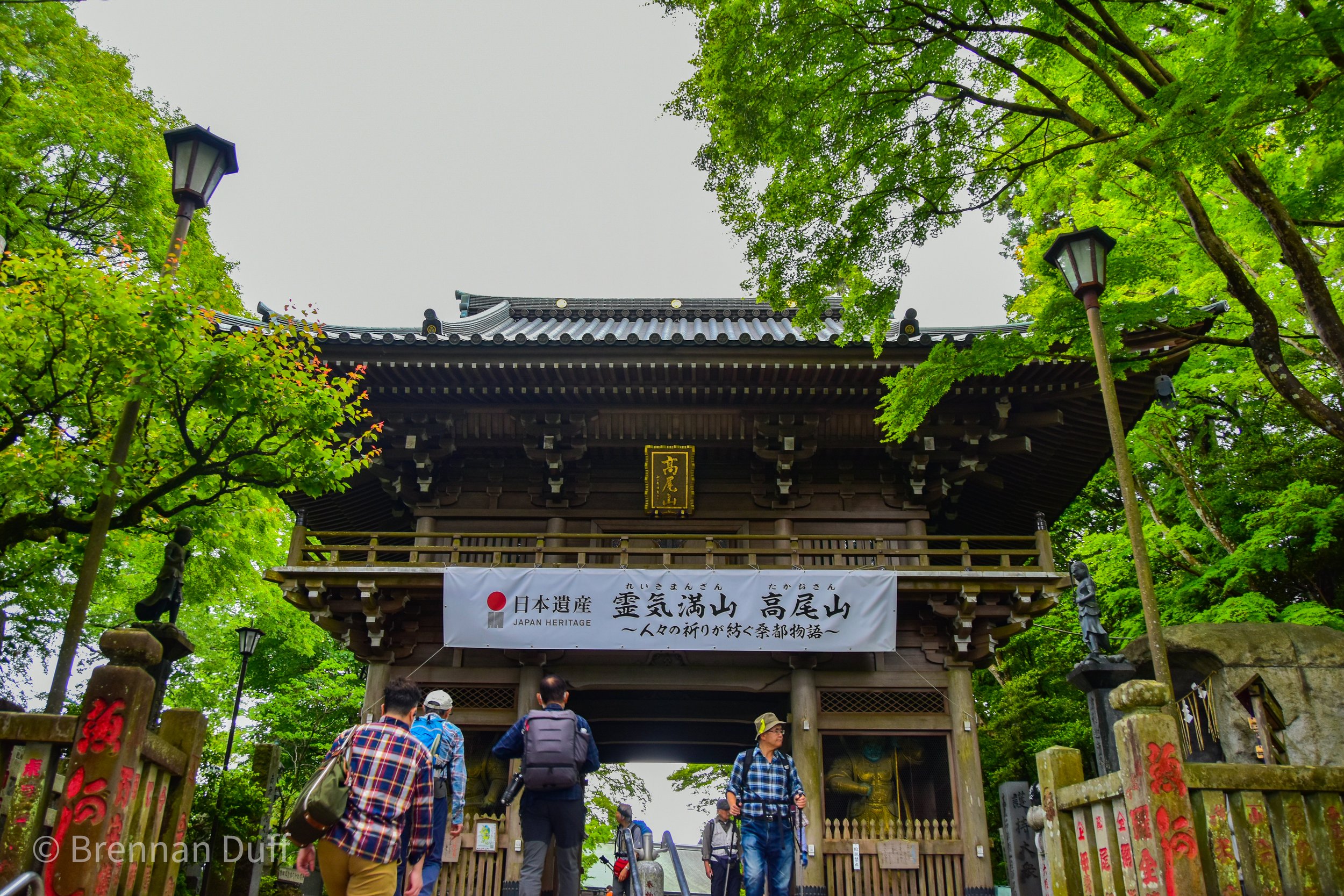Takao-san Yakuôin Yukiji
Takao-san is one of the best-known mountains in western Tokyo. It’s famous for its views over the Kanto plains, and for the Yakuôin Yukiji temple complex. It was originally founded by the imperial court in 744 C.E. as a way to spread the teachings of Esoteric Buddhism, the primary school of Buddhist faith in the Imperial Court, into the then very distant area of the Kanto region. The temple and the mountain have played an important role in the history of the Kanto area; it serves a spiritual purpose as the mountain in the west, it’s said to be home of a powerful tengu, and it’s a mountain pass that overlooked the main roads into and out of the eastern plains. One of the main figures of worship at the temple is Izuna Daigongen, a tengu spirit which straddles the lines of both Shinto and Buddhist belief. Izuna embodied many of the qualities found in Myo, righteous Bright Kings in Escoteric Buddhism who smite the wicked and defend the faithful, but he was also seen as a divine being who worked in concert with the Shinto harvest god Inari. In the 14th century, a noted monk staying at the temple named Shugen Daitoku, had a vision of Izuna Daigongen and persuaded the temple to establish Izuna as a figure of worship. Tengu, humanoid figures typically wearing monk robes and with varrying degrees of bird-like features, are fascinating figures in Japanese folk lore and mythology because they can be creatures of great wisdom and power, but can also bring ruin and mischief. Another noted tengu with a temple connection is Sôjôbô at Kurama-dera in Kyoto.
For the educated: 8. For the casual: 9
Takao-san is one of those places I just can’t recommend enough. For one, it’s just a great hike for those who want a nice burn in the legs but isn’t punishing. The trail to the summit is steep but not particularly long, and even if you find yourself short of breath, there are plenty of places to stop and observe the beauty in the area. If hiking isn’t your thing, no problem! There is a ropeway and a chair lift which can take visitors up most of the way to the observation decks and the lower levels of the temple. Along the way, there’s also a monkey enclosure, a food and beer garden, and a traditional snack stall.
The temple itself will require climbing some stairs, but most of the visitor attractions are on the lowest level. To reach the temple complex from the ropeway station, there is the “Woman’s Path” and the “Men’s Path.” I know, not very 21st century school of thought, but that’s the way it’s layed out. The Man’s Path ascends the terrain via a large stairway which is hard to miss. Short but steep. The Woman’s Path is slightly longer but the ascent is much more gradual. Once at the lower levels of the temple, you can clean money in the prayer halls, while specialty halls are higher up on the hillside as well as the trail which eventually leads to the mountain summit. As mentioned before, the temple is closely linked to tengu spirits, so there is no shortage of tengu statues, masks, and other ornamentations around the complex.



